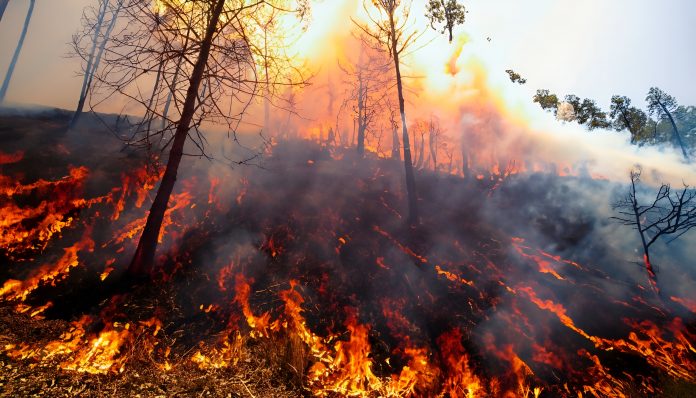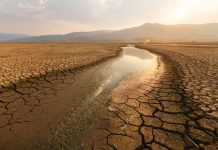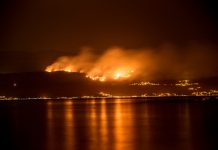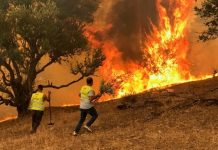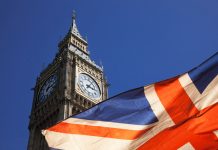Wildfires and record heat waves turn our summers into a nightmare. In this vein, what can local governments do to combat heat stress and increase safety? Vasileios Latinos, Head of Resilience and Climate Adaptation at ICLEI Europe, provides a detailed response
Fire has always been with humanity. According to the famous Greek myth, Prometheus defied the gods on Mount Olympus and stole fire from the workshop of Hephaestus, offering it to humankind.
While Prometheus was punished for his deed by being chained to a rock between the Caucasus Mountains, since then, fire has been a celebrated gift at religious (and other) festivals. But, it is also a force, or curse if one likes, determined to ruin summers and destroy thousands of hectares of forest and agricultural land, especially in Southern Europe.
Heat stress and global temperatures rising
You’ve undoubtedly noticed that summers are getting hotter every year now! The summer of 2023 has definitely been the hottest summer I have personally experienced. Global temperatures have risen by about 1.2C since the Industrial Revolution, making extreme heat stronger and more likely. As a response to this increase, world leaders promised to limit warming to 1.5C by the end of the century at the Paris Climate Summit in 2015. But how is this going? Are we really there yet?
In 2023, the Intergovernmental Panel on Climate Change (IPCC) said that over 3.3 billion people live in hotspots plagued by a high vulnerability to climate change. Hence, heat stress this is a matter of concern for all of us, not only those living in the hottest corners of the planet.
Summer 2023 wildfires in Greece
I come from Greece and spent the summer of 2023 working remotely there. During August, more than twenty people, believed by officials to be migrants or refugees, were found burnt inside northern Greece’s Dadia Forest in the Region of Evros. This happened only a few weeks after the catastrophic fires on the island of Rhodes and only some hours after wildfires in Evia, Fyli, Corfu, Parnitha, Lavrio, and many other places across the country. For the European South, ‘after fire’ almost always means ‘before the next fire’.
Overall, the summer of 2023 wildfires in Greece resulted in at least 35 deaths and injured more than 20 people, burning dozens of areas throughout the country.Over 80 wildfires have been recorded, with temperatures reaching a scalding 41.0C in Athens, 46.0C in the Region of Thessaly, and 45.0C on the island of Rhodes. Local authorities have suggested the wildfires burning through the isles of both Rhodes and Corfu might be the work of arsonists, but climate scientists say rising temperatures are to blame.
And while the European Union had been sending more firefighting planes and helicopters to Greece over the hottest weeks, and as devastating wildfires burned across the north-east and throughout the entire Attica Region (the Acropolis was covered in smoke during August 2023), it became pretty clear that the national expenditure for fire and forest prevention over the previous years has been far from adequate. Most affected areas depended on volunteers only, as the firefighters, while fighting bravely and risking their lives, proved very low in numbers.
Wildfires are increasing globally
In the view of the World Health Organization (WHO), wildfires are increasing in frequency, severity, and duration around the globe, heightening the need to understand the health effects of wildfire exposure. The risk of wildfires grows in arid conditions, such as extensive drought periods during the summer months, prolonged heat waves and high winds. A mixture of hazardous air pollutants, like PM2.5, NO2, ozone, aromatic hydrocarbons, or lead, make up wildfire smoke.
In addition to contaminating the air with toxic pollutants, wildfires simultaneously impact the climate by releasing large quantities of carbon dioxide and other greenhouse gases into the atmosphere. Wildfire events are getting more extreme regarding acres burned, duration and intensity, and they can disrupt transportation, communications, water supply, and power and gas services (Source: WHO, 2023).
As a Greek living abroad and coming back to my country every year, what I can say is this: It seems that wildfires, whether they are caused by five days of continuous 45-degree temperatures or by arson, are going to remain a frequent occurrence, something that cities, regions, and communities all across Europe will have to deal with in the next few years. We cannot avoid this, it seems.
Become resilient and adapt
Nevertheless, what we can do is learn how to become resilient and adapt to the particular situations communities are dealing with. We must build our cities and plan for summer, bearing fire in mind!
What actions can cities and regions employ to combat extreme heat and prevent wildfires? There are a multitude of activities that can take place during the summer months, but also throughout the rest of the year.
Everyone must be aware of the danger of wildfires and heat. Both people and institutions need to prioritise heat and an area for action. Additionally, we must be prepared for the worst and focus on the safety of vulnerable communities, like elderly people living alone in city centres and those working during peak heat hours,
e.g. outdoor workers and delivery/service providers.
Transform and invest in cities
We need to transform our cities into cooler and greener spaces by adding greenery and water features, maximising the benefits that blue and green infrastructure can bring into the urban fabric. Cities are typically a few degrees hotter than surrounding areas because of the heat released by fossil fuels and absorbed by infrastructure, such as asphalt roads and concrete car parks. Hence, we must alter these structures and start putting in permeable surfaces, water elements, and many trees to ensure lower temperatures.
We need to invest in preventive measures to avoid injuries, death and property destruction – as Dr Lenio Myrivili (Global Heat Officer, UN-Habitat and Arsht- Rockefeller Resilience Center) recently said during the second Forum for the Mission on Climate Adaptation and Societal Transformation in Ronneby (Sweden) which I attended with her: “you will not believe the numbers if you look at the casualties, as a result of extreme heat, every year in Europe”. (1)
Cities need to develop effective emergency response systems while testing them beforehand and planning for mandatory evacuations – you cannot imagine how many people refuse to leave their homes and properties, even when a wildfire is raging at their doorstep. Cities must also make emergency shelters and cool spots easily accessible and available. Check, for example, how the Municipality of Athens is preparing and shielding itself through a series of initiatives for CoolAthens.
Ultimately, we as a community need to work together to develop additional support systems to promote a sense of safety and stability in our cities – people who have survived a natural disaster like a wildfire need emotional support and first aid from the state and their fellow citizens.
Flood and climate resilience
Over the last few months, though, many municipalities, local organisations and people have been addressing this crisis in the best way possible. For example, ICLEI Local Governments for Sustainability has partnered with the Zurich Foundation, joining the Zurich Flood Resilience Alliance, which has successfully developed and implemented the Flood Resilience Measurement for Communities (FRMC) process in over 400 communities worldwide.
The Climate Resilience Measurement for Communities (CRMC) is the next step of the FRMC to meet the growing demand to measure resilience to multiple hazards (like heatwaves and wildfires) to speed up climate change adaptation. It is being piloted in various communities through the Zurich Foundation’s Adapting to Climate Change Programme. ICLEI will work with the Metropolitan City of Izmir (Turkey) for 2023-2026 to help implement the process. (2)
To learn more about the CRMC and how it can add value to your programmes, don’t hesitate to contact ICLEI Europe.
This year’s 11th edition of the ICLEI event, the European Urban Resilience Forum, will feature extreme heat and wildfires. The 2024 edition of EURESFO will take place in June 2024 in Valencia, Spain and will answer critical questions on the present and future of climate change adaptation and resilience in Europe.
In the environment of an accelerated transformation, where the post-pandemic recovery is challenged by an unstable conflict situation and the unprecedented scale and frequency of climate change impacts, the European Urban Resilience Forum aims to provide the space and time to discuss a shared vision to implement a European resilient transformation.
For further information about the event, please visit:
www.urbanresilienceforum.eu
References
- The author has confirmed with Dr Lenio Myrivili that this quote can be used.
- https://floodresilience.net/frmc/


